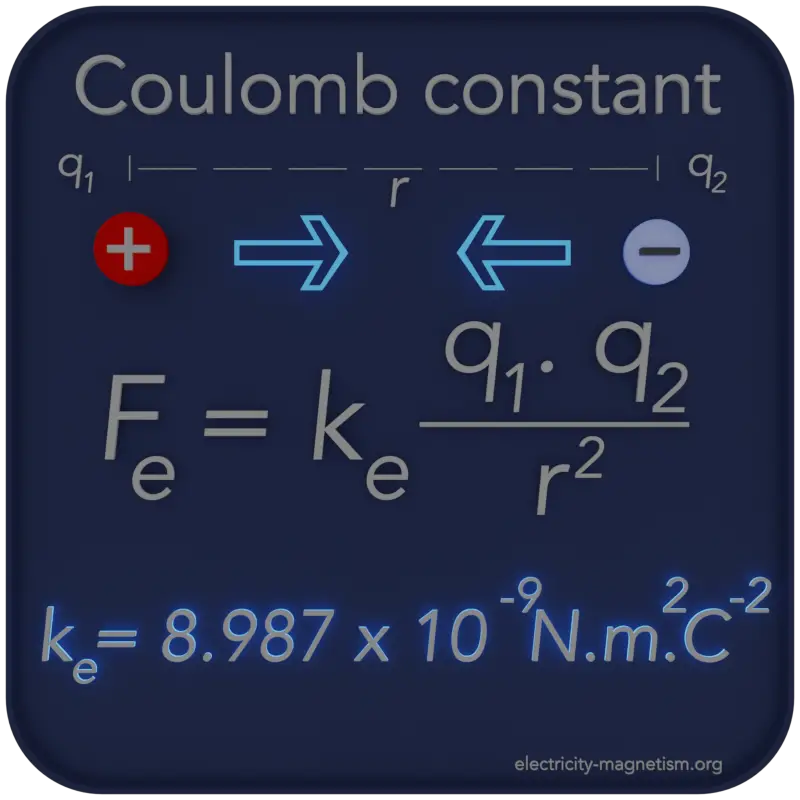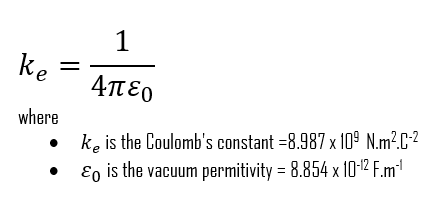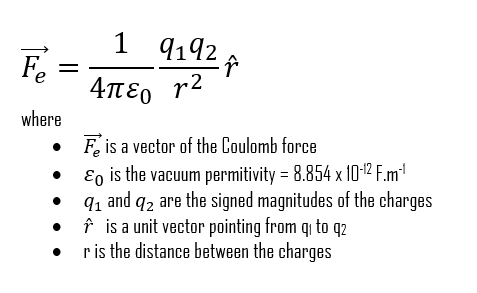30-second summary
Coulomb’s Law
The Coulomb constant, or the electrostatic constant, (denoted ke, k or K) is a proportionality constant in Coulomb’s Law.
Coulomb’s law is a law of physics that describes the electric forces that act between electrically charged particles.
Coulomb’s law has many applications to modern life, from Xerox machines, laser printers, electrostatic air cleansing to powder coating.

Coulomb Constant
The value of the proportionality constant in Coulomb’s law depends on the system of units used. In our study of electricity and magnetism, we will use SI units exclusively. The SI electric units include most of the familiar units such as the volt, the ampere, the ohm, and the watt. (There is no British system of electric units.) The SI unit of electric charge is called one coulomb (1C).
The Coulomb constant is used in many electric equations, although it is sometimes expressed as the following product of the vacuum permittivity constant:

From now on, we will usually write Coulomb’s law as:

Frequently asked questions
Coulomb’s law can be used to calculate the force between charged particles (e.g., two protons) or between two charged objects. The magnitude of the electric force F is directly proportional to the amount of one electric charge, q1, multiplied by the other, q2, and inversely proportional to the square of the distance between the particles.

